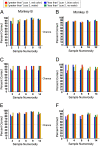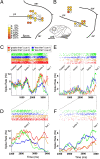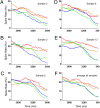Basic mathematical rules are encoded by primate prefrontal cortex neurons
- PMID: 20133872
- PMCID: PMC2836656
- DOI: 10.1073/pnas.0909180107
Basic mathematical rules are encoded by primate prefrontal cortex neurons
Abstract
Mathematics is based on highly abstract principles, or rules, of how to structure, process, and evaluate numerical information. If and how mathematical rules can be represented by single neurons, however, has remained elusive. We therefore recorded the activity of individual prefrontal cortex (PFC) neurons in rhesus monkeys required to switch flexibly between "greater than" and "less than" rules. The monkeys performed this task with different numerical quantities and generalized to set sizes that had not been presented previously, indicating that they had learned an abstract mathematical principle. The most prevalent activity recorded from randomly selected PFC neurons reflected the mathematical rules; purely sensory- and memory-related activity was almost absent. These data show that single PFC neurons have the capacity to represent flexible operations on most abstract numerical quantities. Our findings support PFC network models implementing specific "rule-coding" units that control the flow of information between segregated input, memory, and output layers. We speculate that these neuronal circuits in the monkey lateral PFC could readily have been adopted in the course of primate evolution for syntactic processing of numbers in formalized mathematical systems.
Conflict of interest statement
The authors declare no conflict of interest.
Figures






References
-
- Whitehead AN, Russell B. Principia Mathematica. Vol. 1. Cambridge, UK: Cambridge Univ Press; 1910.
-
- Whitehead AN, Russell B. Principia Mathematica. Vol. 2. Cambridge, UK: Cambridge Univ Press; 1912.
-
- Whitehead AN, Russell B. Principia Mathematica. Vol. 3. Cambridge, UK: Cambridge Univ Press; 1913.
-
- Danzig T. Number, the Language of Science. New York: Free; 1954.
-
- Dehaene S. The Number Sense. New York: Oxford Univ Press; 1997.
Publication types
MeSH terms
LinkOut - more resources
Full Text Sources
Other Literature Sources
Miscellaneous

